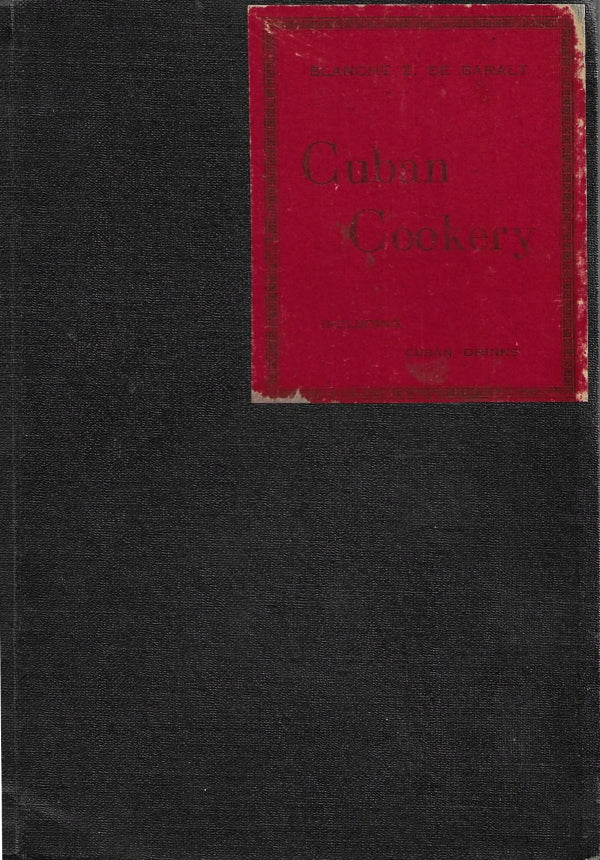OP: Cuban Cookery
This is a book frequently referred to but seldom seen—a collection of traditional Cuban recipes gathered in the 1920s and 1930s by an American-born woman who ultimately settled on the island and became a respected advocate for a culture and a vigorous cuisine, developed over many years of contact and conquest. .
We do not have many details on the life of Blanche Zacharie De Baralt (1865-1947), but she had met—shortly before his death—José Martí, one of the leaders in the Cuban struggle against Spanish rule, and published a biography of him in 1945. She also received a PhD in history from the University of Havana.
Her cookbook, originally published in 1931 by the Cuban firm of Editorial Hermes, is extremely rare, but happily it was given a second publication—to the best of our knowledge unaltered—by Molina and Company in Havana. While findable, it, in turn, is now scarce as well.
The printing is undated, but most bibliographers suggest 1946. The emphasis is on home foods—plain, straightforward, and frequently hearty. We see the great meal soup, ajiaco, bristling with pork, corn, plantains, pumpkin, and then flavored with lime and garlic; local varieties of such Latino favorites as picadillo and ropa vieja; and huevos reales—egg yolks cooked with rum.
What has brought the book particular attention and made it somewhat of a collector’s item is a section on drinks in what is referred to as the “Appendix.” As De Baralt acknowledges, cocktails are surely not part of the Cuban tradition, but with the American presence on the island since the end of the 19th century and the energetic support of the rum industry, they became quite visible offerings in hotels and restaurants. You’ll find the Havana Cooler, the Bacardi Fizz, and a couple of dozen others, serving as lively additions. There is also a Rum Cocktail, which is identified as the “Cuban Mojo.” For those concerned with such matters, this appears to be the first appearance in a book of the famed Mojito.
Our copy is a Molina and Company printing, exceedingly uncommon, even in Cuba. Of the few we are aware of currently on offer, this is in superior condition—a strong Very Good. Published without dust jacket, it is bound in black cloth with a striking red title label on the front. Virtually the only flaw is a bit of color loss (about 1/16”) on two edges of the label. The interior, printed on superior stock, is clean and unmarked, the binding strong, the case unblemished. We have never offered it previously and are pleased to be able to price it more advantageously than even those in lesser condition.


